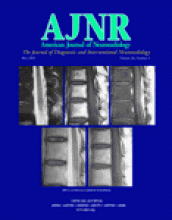Abstract
BACKGROUND AND PURPOSE: Reports about steroids and oxygen-ozone therapy to treat lower back pain have been increasing. The purpose of our study was to compare the clinical outcomes in patients treated with infiltrations of O2-O3 gas or steroids at short-, medium-, and long-term follow-up.
METHODS: A total of 306 patients (166 with primarily disk disease, 140 with nondisk vertebral disease) with acute or chronic low back and sciatic nerve pain received a CT-guided intraforaminal infiltration of an O2-O3 gas mixture or an periradicular infiltration of steroids. Neurologists unaware of the type of treatment assessed the patients.
RESULTS: At 1-week follow-up, most patients had a complete remission of pain, regardless of the treatment. At 6-month follow-up, differences in favor of O2-O3 treatment were significant in patients with disk disease (P = .0021) but not in those without disk disease (P = .0992). Clinical outcomes were poor in 13 (15.1%) of 86 patients receiving O2-O3 infiltration and in 18 (22.5%) of 80 patients receiving steroid injection (P = .2226). Among patients without disk disease, six (8.6%) of 70 patients receiving O2-O3 infiltration but 21.4% of the patients receiving steroid injections had poor outcomes (P = .0332).
CONCLUSION: Oxygen-ozone treatment was highly effective in relieving acute and chronic lower back pain and sciatica. The gas mixture can be administered as a first treatment to replace epidural steroids.
- Copyright © American Society of Neuroradiology







